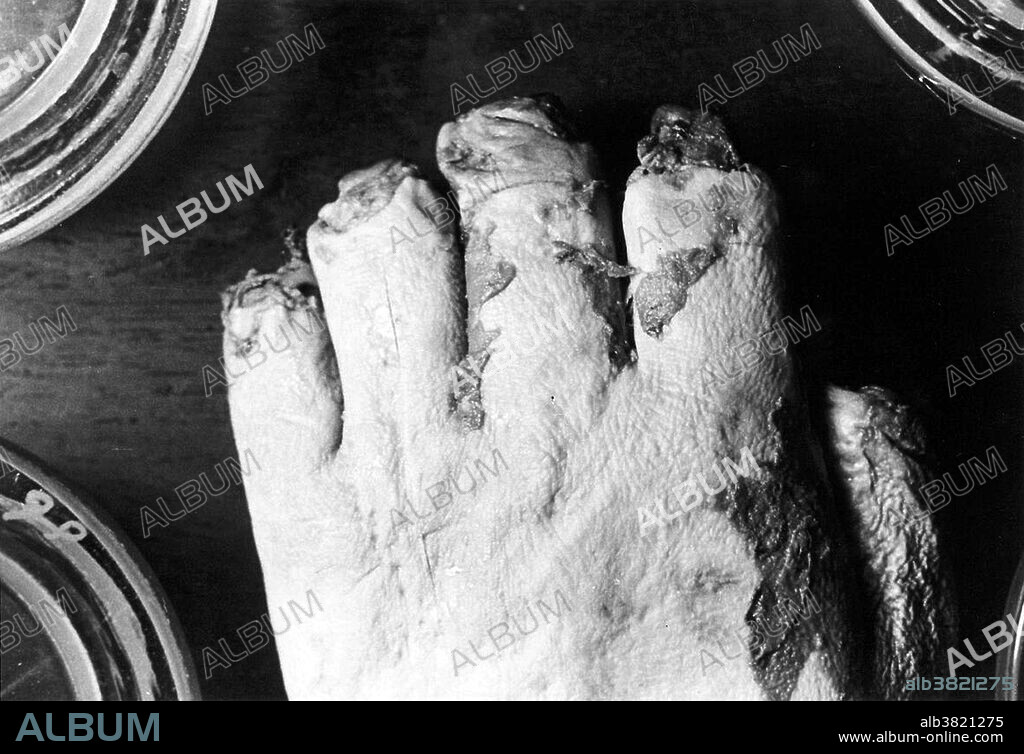alb3821275
Hand of Victim, Buck Ruxton Murder Trial

|
Zu einem anderen Lightbox hinzufügen |
|
Zu einem anderen Lightbox hinzufügen |



Haben Sie bereits ein Konto? Anmelden
Sie haben kein Konto? Registrieren
Dieses Bild kaufen.
Nutzung auswählen:

Titel:
Hand of Victim, Buck Ruxton Murder Trial
Untertitel:
Siehe automatische Übersetzung
The tips of the fingers of the victims were cut off to prevent fingerprint identification, 1935. The skill with which the fingers were mutilated led police to hypothesize that the murderer had anatomical training and knew how to use a scalpel. Buck Ruxton (1899-1936) was a Parsi doctor and murderer who strangled his wife Isabella. In order to prevent their housemaid, Mary Jane Rogerson, from discovering his crime before he could dispose of the body, he suffocated her too. Ruxton then proceeded to dismember and mutilate both bodies to hide their identities. The case is remembered now for the innovative forensic techniques employed in solving it. The bodies were identified using the fledgeling techniques of fingerprint identification, forensic anthropology to superimpose a photograph over the X-ray of a victim's skull and forensic entomology to identify the age of maggots and thus the approximate date of death. This was one of the first cases where such forensic evidence was successfully used to convict a criminal in the United Kingdom.
Bildnachweis:
Album / NLM/Science Source
Freigaben (Releases):
Model: Nein - Eigentum: Nein
Rechtefragen?
Rechtefragen?
Bildgröße:
3900 x 2668 px | 29.8 MB
Druckgröße:
33.0 x 22.6 cm | 13.0 x 8.9 in (300 dpi)
Schlüsselwörter:
ABDRUCK • ACKER • EHEFRAU • EHEMANN • ERWUERGEN • ERWÜRGEN • FELD • FINGERABDRUCK • FORSCHUNG • HANDABDRUCK • IDENTIFIZIERUNG • OPFER (GEWALT) • STRANGULIEREN • TOD DURCH ERWUERGEN • TÖTEN • ÜBERZEUGUNG
 Pinterest
Pinterest Twitter
Twitter Facebook
Facebook Link kopieren
Link kopieren Email
Email
